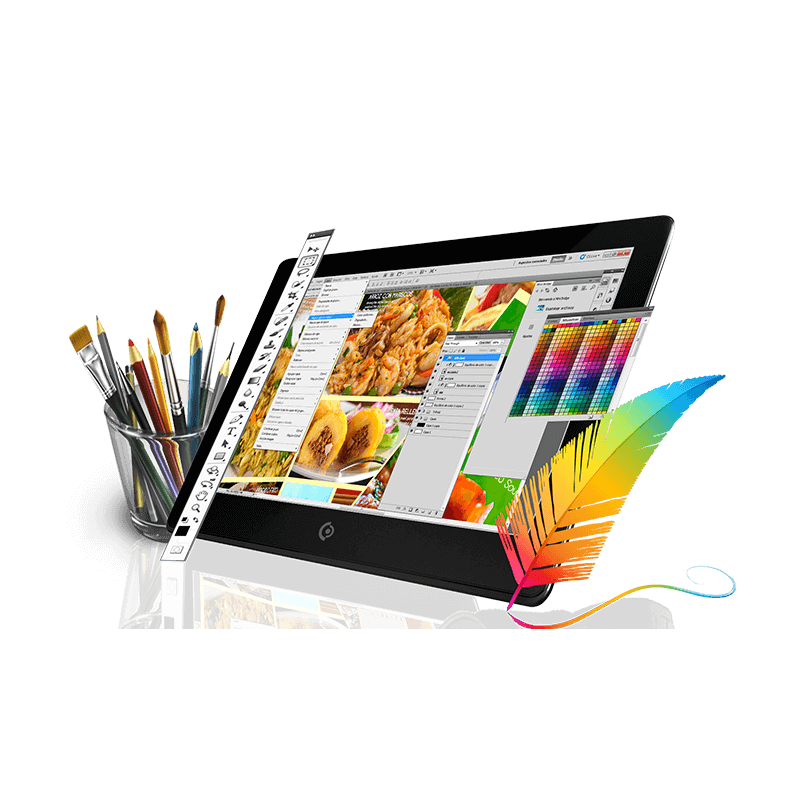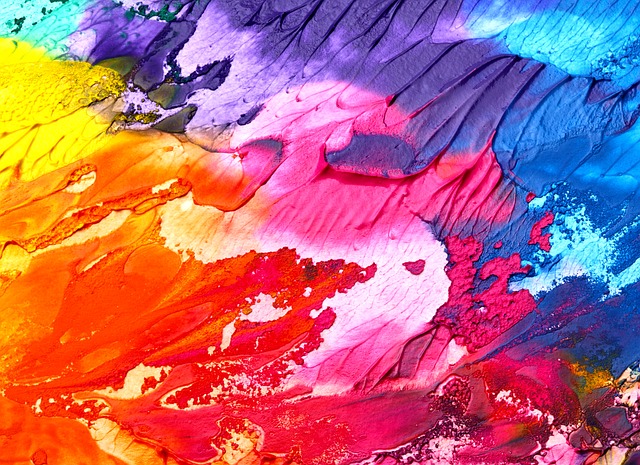
Introduction
Logo and brand development is in my eyes the crack cocaine of graphic design. The logo is the single most important graphic any business will own, and no single piece of design will mean more to a businesses profile or public image.
As a logo designer the work can be wide and varied, one day being asked to sum up a photographer’s personality, another an international drug firms ethical outlook. The challenge lies in hitting the brief. The rush comes from nailing the idea.
This guide is for those new to logo design and wanting to gain an understanding of Breadline Design and more About Us and our process. It’s worth mentioning that there’s no right and wrong way of developing logos and brands. Design and idea generation is an organic process, and all of us have our own ways of getting to the finish line. This guide outlines my process and experiences designing logos.
Design and the art of the clever logo
I only did one branding unit at university, the brief being to redesign the Body Shop logo. After a brief lecture I went to work, and a couple of days later had selected a trendy typeface and added a butterfly as a graphic. Thinking it was the bees-knees, I put it in and got a decent grade. Believing I’d mastered logo design, I moved onto the next project and all was forgotten. It was two years later after I’d started as a junior designer in Newcastle, I was asked to design a logo for an online management training firm. After some initial fumbles in Illustrator, my Creative Director (CD) pulled me aside and asked me to take a long look at the FedEx logo, and asked what the hidden trick was within its solid typeface. Bemused I said I couldn’t see it and thought the design was a bit dull, it was only after the hidden forward-pointing arrow between the E and the X was pointed out to me that the penny dropped, and the whole world of logo design opened itself up to me.
Once I’d had this FedEx revelation I soon started to see clever graphical tricks and ideas in many other logos, a notable example being the Amazon logo. No longer selling just books, they wanted a new logo that would represent them selling almost everything. The elegant answer being a joining line that not only looks like a smile, but connects the A and the Z, as in “Sell everything from A to Z”. A beautiful touch that completes an iconic mark.
Clever graphical tricks are only one aspect of logo and brand creation. The Sony logo contains no visual reference to electronic products, just as the Calvin Klein logo gives no hint as to the corporation’s design ethos. Instead, both logos serve to position the brands within a certain market using type alone, which can be tricky but not impossible. For now, however, I’ll concentrate on how to go about creating a “clever” logo, and why they are so effective.

Uniqueness
Logos which incorporate a graphical link relating to the business or business ethos take on a life of their own, transcending the chosen typeface and avoiding graphical clichés.
The logo for the dentist Robin Rutherford (featured below) is a beautiful example of the business and the ethos coming together in a unique and engaging way.
Through a clever combination of a tooth and a heart, the end result is greater than the sum of its parts, creating a unique and memorable identity.
Contrast this with the number of companies whose identities use tried and tested graphical tricks, and this need for individuality becomes all the more apparent.
As well as being unique, idea-led identities also have the luxury of being able to ride the waves of cultural change, adjusting to ever shifting trends in graphic design without diminishing in power. A great example being when Apple effortlessly revamped their logo with the launch of the iMac, dropping the iconic stripes without losing any of the brand strength.
Trends in logo design aren’t hard to spot. Right now Web 2.0 logos, complete with candy gloss and drop shadows are flavour of the moment. Logos designed using nothing but these effects to differentiate themselves will fade and fall from favour as time moves on, whereas logos with a strong visual idea can adopt and drop these trends as and when they come round. Vodafone recently demonstrated this by adding a Web 2.0 style boss and shadow to their speech mark icon.
Clever Type
The previously featured Robin Rutherford logo blended both customer care (heart) and the dental service offered (tooth) smoothly and effectively. However, often a logo that features the service or product offered simply isn’t necessary. For example, visually showing the act of consultancy or recruitment via a graphic symbol could prove tricky indeed. In these cases the designer has the option of concentrating on creating a mark that uses the text and typeface alone to place the business within the market.
A clever combination of characters can be as powerful as an icon-based logo. Indeed, often character combinations can, and often do become an icon. Below are some great examples of combined character elements.
Logos of this nature are immediately memorable and have an inherent cleverness that is similar to the logos I spoke of earlier. As well as providing the business with a logo that can be applied to different areas of a brand (without being pinned down to one facet of the organisation), they are also unique to the business’s name. The E2 logo featured above could only realistically be used by an organisation called E2. Compare that with a corporate “swoosh” which can be attached to any business under the sun and the advantage becomes clear.
Of course, sometimes graphical trickery isn’t necessary, and you or the client may feel that a unique or special typeface is all that’s required to serve as an identity.
There are no hard and fast rules when choosing typefaces for this purpose, but I can offer some guidance;
- Buy fonts from a decent type foundry. Download it from a free foundry like DaFont and you’ll see it everywhere from student portfolio sites, flash intros and club flyers before your fee has touched your account.
- Think hard about your choice. Just because there’s a font you love at the time the brief arrived doesn’t mean it’s the right one.
- Serif typefaces generally have an established and mature air, where as sans-serif faces generally feel more modern and young.
- Check type kerning (space between letters) by turning the logo upside down within your graphics program. When the eye isn’t reading the characters, inconsistencies in the face spacing become easier to spot.
- Modify the face if possible, even if only the smallest of changes. A flick on the S of the Microsoft logo is enough to make it a little more unique and split the words without the need for a space.

Choosing Colours
Extending the Brand
A strong idea and justification behind a logo can often be carried forward across different media, extending the logo and reinforcing the brand. Naming your business should be considered here, as we always said when creating our Naming Machine.
Business stationery is often the first destination for an extending brand, potentially followed by brochures and flyers, CDs and DVDs, websites and even TV.
A subtle example of a brand logo cleverly extended into print is the (now defunct) iAsiaWorks client folder. The circuit inspired mark is enlarged and duplicated on the cover, with the upper and lower circles forming the clasp.
This example is very literal, however subtle use of logo parts can also be employed. A great example being United Airlines’ use of their logos 68 degree tilt on many of their assets, coffee cup included.
Clever use of brand elements in this way helps to unite corporate literature and material under the umbrella of the organisation. Brand consistency is obviously important, but integrating clever ideas can add brand value, and if nothing else put a smile on the customers face.
Getting Work
I’ve always designed logos alongside other graphics-related work, mainly print and web design, and this is something I’d recommend to anyone else looking to get into logo and brand design. Designing across several mediums has taught me to make my logos flexible, and has given me first hand experience in taking a brand to its intended audience. Learning and creating design across different mediums will teach you a broader range of graphics skills that will filter back to logo design, as well as exposing you to other brands and learning to treat them with respect.
Once I had reached a professional standard in web and print design, I began to look more critically at the logos I was having to incorporate, and soon began recommending changes, logo revamps and eventually full blown rebrands to clients in order to bring the brands in the line with the quality of work I was creating.
As a freelancer I jumped at every chance to redesign logos for friends, and later parents of friends who worked for or ran businesses looking for new logos. I charged modest fees and worked hard at creating logos I was proud of. In my experience, a well designed logo will often last much longer than the website or stationery that carries it, so it pays to put the effort in early.
A well designed logo will pay itself off time and again as it remains in your folio long past the flash websites and club flyers you did when you were a student.
If you’re serious about going into logo creation, exclusively or combined with other areas of design, you should charge for your work from the beginning, no matter what your skill level. Do work for free and you damage the very industry you wish to go into. I won’t go into all the arguments for and against free or “speculative” work here, suffice to say why would a client pay you for your time if someone else will do it for free/a crate of beer/an iPod shuffle? Granted, if the logo is for a skint friend and it’ll go in your folio then by all means design away, but don’t be fooled into thinking you’ll receive massive exposure and become Wally Olins overnight. Understand that building a name as a brand designer takes time and dedication. Getting involved in other areas of design can be just as rewarding, will probably pay better early on and will give you more of an opportunity to increase your contacts and exposure. Don’t be shy of spreading your creative wings!
